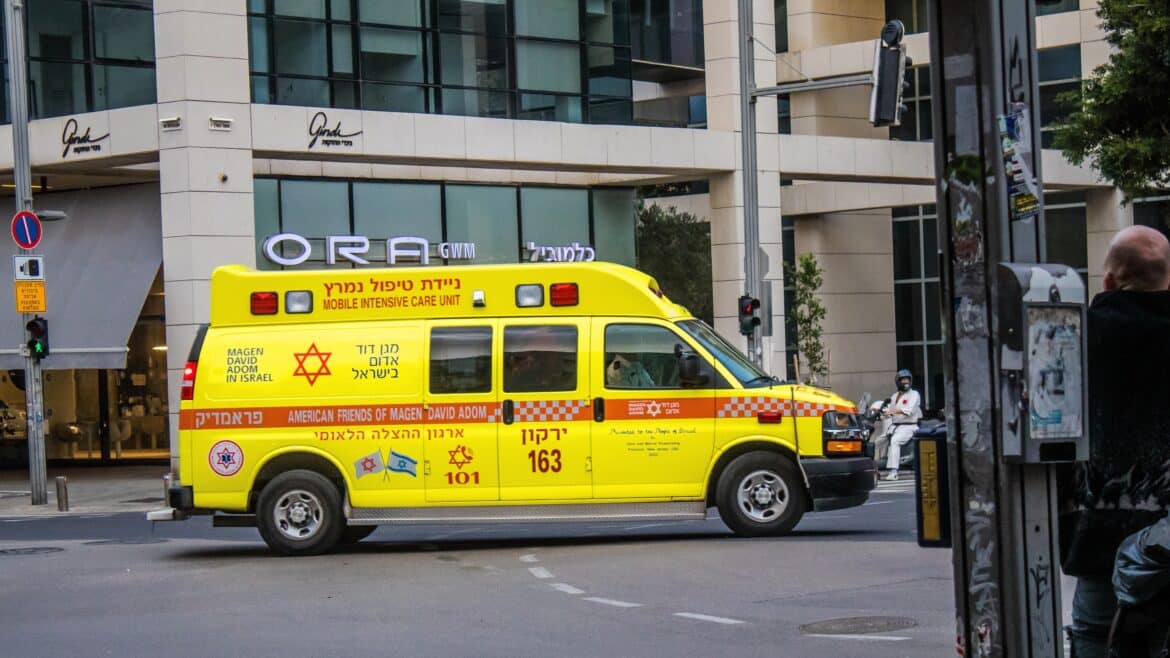The world has never experienced a hostage crisis of such magnitude as that of October 7. Now Israeli hospitals must learn how to meet their needs.
“What is the first thing you say to a captive coming off a helicopter? What tone of voice do you use? Do you hug them? Do you touch them? What do you say when he asks you ‘Why is my mother not here to meet me?’
“We practiced over and over till we found the best solutions and the best people to meet each captive,” said pediatric intensive care physician Dr. Itai Pessach, director of the Edmond and Lily Safra Children’s Hospital at Sheba Medical Center.
Pessach heads Sheba’s special medical team caring for returning hostages.
Of an estimated 251 people kidnapped to Gaza by Hamas terrorists on October 7, 120 have been released over time.
All were taken directly to Israeli hospitals, with 36 going to Sheba, more than to any other single hospital.
In a webinar organized by American Friends of Sheba Medical Center on July 1, Pessach explained that the children’s hospital was deemed the most appropriate area of the 2,000-bed medical center to care for hostages of any age.
“Early on, we understood the captives would need a quiet, protective environment to reduce anxiety, and a place where we could also accommodate their families, which is something we do all the time in our pediatric hospital,” he said.
In addition, they assumed – unfortunately, incorrectly – that child hostages would be freed first and quickly.
“We thought it would take a few days for kidnapped children to be returned and we began to prepare for providing the specific and delicate care they would need. We could not imagine that even a vicious terrorist organization like Hamas would hold children captive for a long period,” said Pessach.
Starting from zero
About 120 professionals were cherry-picked to be trained for the special team helping the freed hostages.
Among them are psychiatrists specializing in the trauma of soldiers and POWs, experts in the treatment of women who’ve been sexually assaulted, and those experienced in working with child victims of violence.
“We had to gather a lot of knowhow because no healthcare provider has done this before – not in Israel and not anywhere else in the world,” said Pessach. “There was no evidence-based protocol, so we had to create it.”
Sheba even sought input from trauma experts who’d dealt with girls abducted by Boko Haram in Nigeria, children kidnapped by drug cartels in Mexico, and children in war zones like Bosnia and Ukraine.
“We simulated different types of return scenarios and practiced them multiple times. We did a thorough process of understanding the right way to receive people who underwent such a horrific experience and prevent further psychological damage from occurring.”
Like an ICU in a hotel room
Based on the collected recommendations, Safra Children’s Hospital carefully prepared a dedicated area, shielded from the press and the public, to receive hostages.
“We made sure the lights were dim because some of them had been held underground and had to acclimate slowly to light,” said Pessach.
“We replaced a lot of furniture to make it look more like a boutique hotel room than a patient room. We didn’t know what their medical condition would be, but we had to be ready to provide advanced care. We were able to interchange from an ICU to a ‘hotel room’ within a few minutes to provide the needed medical care in a safe environment,” he added.
We could not imagine that even a vicious terrorist organization like Hamas would hold children captive for a long period.
The team even thought to set up a chef’s kitchen to prepare any dish the returned captives desired, as well as a hair, nail and facial salon for former female captives who might want those services to help them “feel like human beings,” said Pessach.
Medical records of each captive were studied to determine likely needs, such as prescription eyeglasses that may have been broken or taken away.
Pessach remembered a captive whose specific eyeglass prescription was not readily available.
“So one person asked another who asked another – that’s how things work in Israel – and in less than an hour, in the middle of the night, we found an optometrist who went to his store, prepared the glasses and drove them to Sheba.”
Bad news
Another reason the children’s hospital was the most appropriate place for receiving hostages is that the staff is experienced in gently breaking bad news.
“We had a lot of bad news to tell some of the captives, especially the first ones to be released after 50 days,” Pesach said.
“They didn’t know there were others taken. They didn’t know there were other communities assaulted on October 7. They didn’t know some of their family members died and others were in captivity.
“We wanted to deliver that news in a very controlled and safe manner, tailored in consultation with their family members.”
Lessons learned
Even with all this meticulous preparation, Pessach said that protocols have been tweaked based on actual experience. The accumulated knowledge has been shared with other hospitals receiving hostages – and vice versa.
The staff had assumed, for example, that the returning hostages wouldn’t want to talk or be touched, as is typical of victims of violence. They assumed that initially the hostages would only want to have contact with select people and should be shielded from others.
“But it was the other way around; they yearned physical contact with us and their families, and they wanted to share their experiences and their pain. They wanted to talk, and they wanted to see friends as fast as possible, to experience joy and happiness. They didn’t want to be left alone,” said Pessach.
“Now we know we still need to protect them to a certain extent but also need to give them a lot of choice. The last four hostages that came back really wanted to interact with their friends and families so we allowed that early on,” he added.
“This is a continuous process of learning the exact solution appropriate for each captive returning.”
Each one has a unique story
Pessach said all hostages suffered significant psychological and physical trauma. And while each had suffered in captivity, individual experiences and reactions greatly varied.
“Their condition depended on where they were held and with whom they were held. Those held alone — some were held alone for 50 days with almost no human interaction — had a very different experience physically and psychologically than those held with other hostages or with family members,” he explained.
“Those held underground were exposed to harsher conditions than those held in apartments. Even people in the same group had different experiences depending on how their captors related to each one.”
Returned children, he added, were generally more resilient than adults.
“There are at least 120 more hostages still in Gaza,” said Pessach. “We cannot just sit and wait for them to come back. Every second, their lives are at risk and their health is impacted. We in Israel and around the world must do anything in our power to make sure they will come back.”
“We’re ready at a moment’s notice to receive them and give them the best possible care, but that’s not enough. We just need them back here.”
Originally posted at israel21c.org

